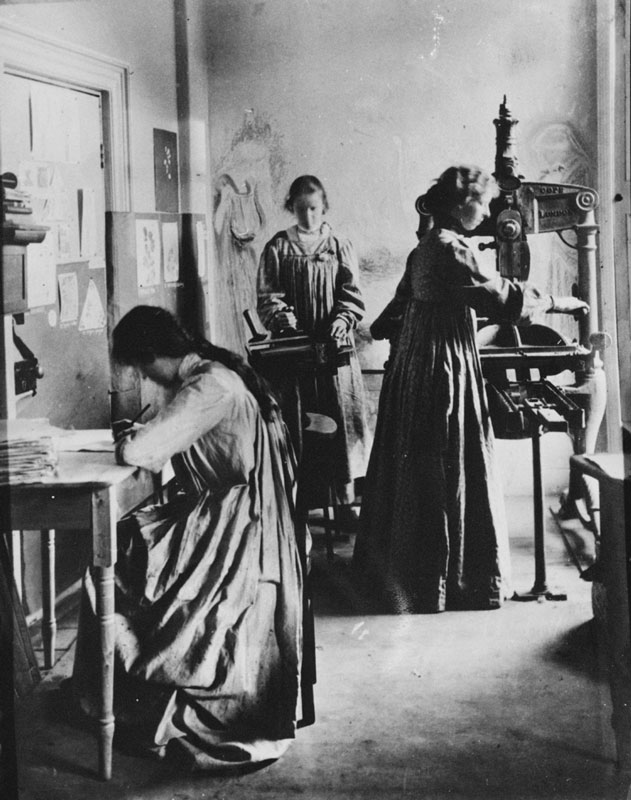Private Presses and Illustration
The private press movement emerged in the later 19th century in reaction to commercial mass publishing and new printing technologies. Private presses returned to earlier production methods including hand-printing and the use of handmade papers.
The aesthetic relationship of text and image and the high quality of every aspect of each book was intended to make them into works of art in their own right. The labour intensive methods of such publications meant that they were produced in limited editions for a luxury market.
Among those artists who produced designs for private presses were some who were also makers of original prints, including the lithographer, Charles H. Shannon, who co-directed the Vale Press. The Golden Cockerel Press, owned and managed by Robert Gibbings, was closely associated with wood block engraving. Elizabeth Yeats’s Cuala Press was dedicated to what she called ‘art printing’. Artists were employed to design books that were printed and often coloured by hand, Yeats herself completing the work with assistants.
Photo of Elizabeth Corbet Yeats and assistants working at the Dun Emer Press in 1903
TCD MUN P 2/46/3
This carefully posed photograph shows the staff of the Dun Emer Press at work. Elizabeth Corbet Yeats is seen operating the hand press, while Beatrice Cassidy applies ink to the plate or typeface to be printed, and Esther Ryan, seated, is proofreading. Visible in the background is a mural in pastel by the writer and artist George Russell (AE). In 1902, the Dun Emer workshop was founded by Evelyn Gleeson, Augustine Henry, and Lily and Elizabeth Yeats, one part of which was the Dun Emer Press. Under Elizabeth C. Yeats young women were trained in the production of hand printed books and prints. In 1908, the partnership with Gleeson was dissolved and the Yeats sisters set up independently under the name Cuala Industries, which included the Cuala Press.
Emmeline Cadbury A message for every day
Illustrated by Elizabeth Corbet Yeats
Dublin, 1923
Yeats B.a.20
This is the title page of a volume, privately published in an edition of 24, which was produced as a devotional calendar. Its purpose was to provide an inspirational reflection for each day. A message for every day was illustrated with eleven small photoengraved designs by Elizabeth Corbet Yeats which were subsequently hand-coloured.
Emmeline Cadbury A message for every day
Illustrated by Elizabeth Corbet Yeats
Dublin, 1923
Yeats B.a.20
This page is headed with a quotation from Thessalonians 5:15, in the New Testament. It is illustrated with a floral motif designed by Elizabeth C. Yeats and hand-coloured. Within the volume, a number of capital letters are hand-coloured in red.
A.E. Coppard (ed.) Songs from Robert Burns
Illustrated by Mabel Annesley
Waltham Saint Lawrence [1925]
Press B GOL C 1925 6
When Robert Gibbings acquired the Golden Cockerel Press in 1924, the prospect of having complete control over the book-making process appealed greatly to the Cork-born wood engraver. Under his stewardship, the press gained a high, international reputation for the artistic quality of its publications. Gibbings invited numerous artists to work with him including fellow members of the Society of Wood Engravers, such as Mabel Annesley. Gibbings wanted the artists he engaged to become fully involved in all aspects of book production, believing that by doing so, the artists would more fully understand their role as illustrators. All images used in Golden Cockerel Press productions were cut by hand.
These illustrations are by Mabel Annesley, a native of County Down.




